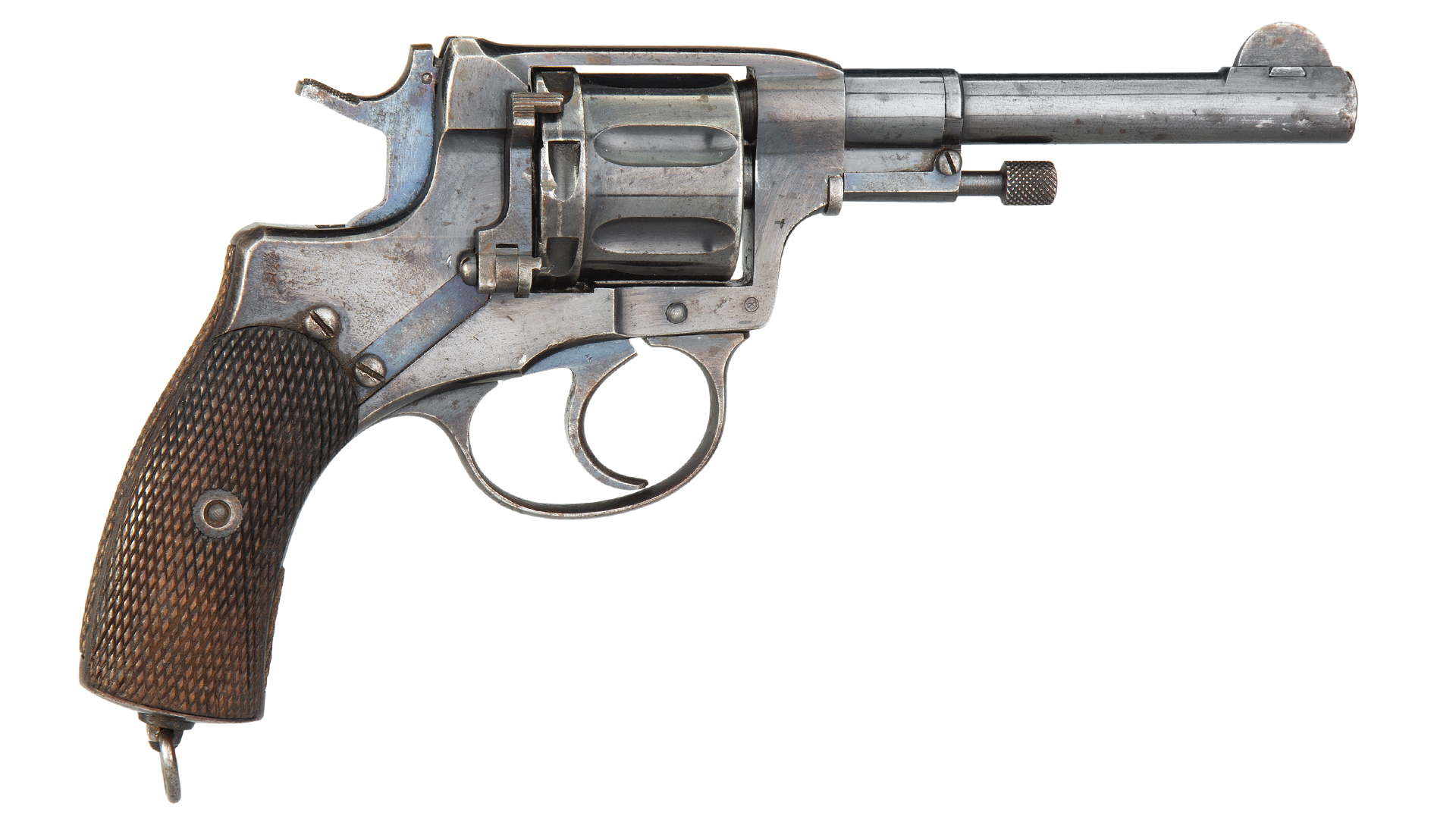
The current war in Ukraine has populated the internet with an abundance of images that have piqued the curiosity of firearm and militaria collectors worldwide. Photos with captions like: “Russians fighting with 19th century muskets” are disingenuous at best when the accompanying illustration is of a soldier with a bolt-action Model 91/30 Mosin-Nagant with a sniper scope—an effective rifle in any century.
I wouldn’t be surprised, however, to see a photo of a soldier, from either side, carrying a Model 1895 Nagant revolver. Since its adoption by the armies of the Tsar in 1895, more than two million of these seven-shot, gas-check revolvers have been produced and found use in every corner of the globe.
Designed by Belgian arms designer Léon Nagant, this revolver was chambered in the 7.62x38 mmR cartridge. Nagant had previously designed a similar revolver for the Belgians in 1878, which was subsequently adopted by Norway, Sweden, Serbia and Luxembourg. This design differed from the others in the way that Nagant sought to solve the age-old problem of the loss of gas pressure as the bullet makes the jump from the revolver cylinder to the barrel breech. This gap can dramatically reduce projectile velocity and, in some older blackpowder arms, can cause chain-fires resulting in multiple rounds discharging at once. Nagant’s design utilized a cartridge with the bullet sunk into the body of the case, allowing the head of the cartridge to be pushed forward into the barrel as the revolver was fully cocked. By bridging this gap and eliminating the escape of gas pressure, it is estimated that 70 fps is added to the muzzle velocity of the projectile.

Initially manufactured in Liege, Belgium, the production of the Nagant revolver was moved to the now famous Tula Arsenal in Russia, where production continued well past World War II. Double- and single-action models were produced, and all are stamped with the year of manufacture on the left side of the frame.
With an initial muzzle velocity of 1,100 fps, it was one of the hottest pistol cartridges of World War I, but it suffered a design flaw that made it hard to compete with similar guns of the period. Just like the American Single Action Army, the Nagant had to be loaded from a side gate, one round at a time, and each empty case had to be extracted with a rod. Top-break and side-gate extraction methods were significantly faster and more reliable than the old side-gate and ejector-rod system of the cowboy
Colt revolvers.
There is one Model 1895 Nagant in the collection of the National Firearms Museum that holds great interest for me, as it comes with ironclad provenance from an impeccable source. It is a Nagant from World War I made in 1914 at the Tula Arsenal.
Most history books note that on the 11th hour of the 11th day of the 11th month in 1918, the Great War ended with the Armistice on the Western Front. Others will be quick to note that it wasn’t until June 28, 1919, when the Treaty of Versailles was signed, that the war truly ended.
However, for thousands of Allied soldiers, the war did not end until November 1920, when the last troops left Russia after fighting the Bolsheviks. The Treaty of Brest-Litovsk in March, 1918, ended Russian participation in the Great War. This freed up 80 German infantry divisions for the Spring Offensive on the Western Front. Hoping to keep the Eastern Front open and to reclaim billions of dollars and pounds sterling worth of military supplies at the ports of Archangelsk, Murmansk and Vladivostok, the Allies sent nearly 100,000 troops to seize the ports and their supplies, guard the Trans-Siberian Railroad, free the beleaguered Czech Legion and assist the White Russians in wresting control of Russia away from the Bolsheviks (Reds). The United States would commit hundreds of Soldiers and Sailors to what would become known as “The Polar bear Expedition.”
It went on for two years, and the result was not favorable—Russia fell under communist domination for the next 75 years. Hundreds of Allied troops were killed or seriously wounded. One of the saddest legacies is that most Americans don’t know about the Polar Bear Expedition of 1918 to 1920.
Thanks to the generosity of COL Robert Lind, the Museum has an M1895 Nagant revolver from his father, COL Roy Francis Lynd, who commanded Company M of the 31st Infantry in Vladivostok. In August of 1918, the 27th Infantry and Lynd’s 31st Infantry were sent to protect the Trans-Siberian Railroad in Far Eastern Russia. He served in Siberia for two years, departing Vladivostok on November 16, 1920, two years and five days after the Great War ended.






































